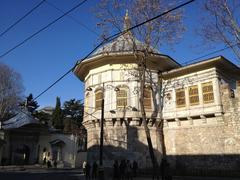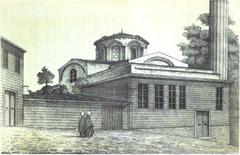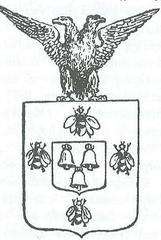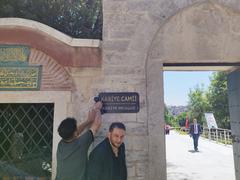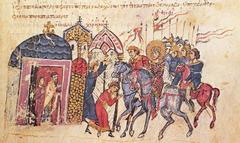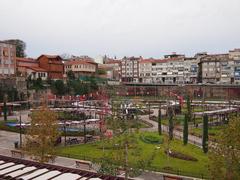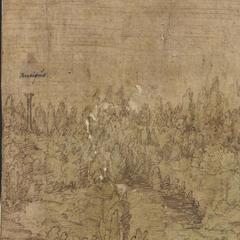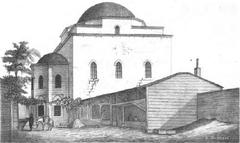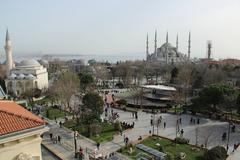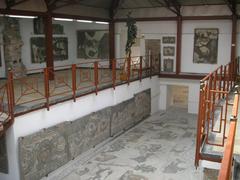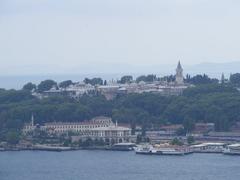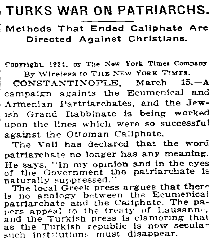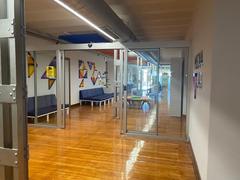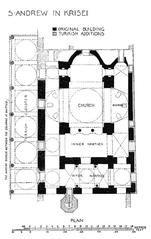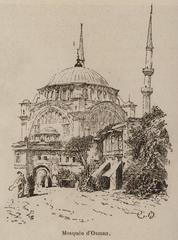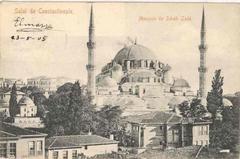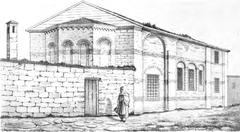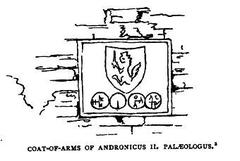Ahrida Synagogue Visiting Hours, Tickets, and Historical Significance in Istanbul
Date: 04/07/2025
Introduction: A Jewel of Jewish Heritage in Istanbul
The Ahrida Synagogue, located in the heart of Istanbul’s historic Balat district, is one of Turkey’s oldest and most architecturally significant Jewish landmarks. Founded by Romaniote Jews in the early 15th century after their migration from Ohrid (in present-day North Macedonia), the synagogue stands as a testament to centuries of Jewish life, religious resilience, and cultural integration within the Ottoman Empire. When Sephardic Jews expelled from Spain arrived in 1492, they joined the Romaniote community, transforming Ahrida into a unique center that blends diverse traditions and reflects Istanbul’s multicultural fabric (Better Istanbul; Turkey Travel Planner; Visit Turkey).
Table of Contents
- Introduction
- Historical Overview
- Visiting Ahrida Synagogue: Practical Information
- Architectural Highlights
- Nearby Attractions
- FAQ
- Conclusion
- Visuals and Resources
- References
Historical Overview
Origins and Early History
Founded circa 1430 by Romaniote Jews, the Ahrida Synagogue derives its name from Ohrid, the city of origin for its founders. It quickly became a spiritual and communal hub for Istanbul’s Jewish population. The arrival of Sephardic Jews after their expulsion from Spain in 1492 brought new traditions and growth, establishing Ahrida as the heart of a flourishing Jewish neighborhood in Balat (Better Istanbul; Turkey Travel Planner).
Architectural Evolution
The Ahrida Synagogue’s original structure was modest and intentionally unobtrusive, a reflection of Ottoman regulations for non-Muslim places of worship. After a fire in the 17th century, it was rebuilt in 1694 under Sultan Ahmed II, incorporating Ottoman Baroque elements that characterized the Tulip Period. The exterior remains discreet, while the interior boasts a high arched ceiling, dark woodwork, and stained glass windows (Ege Fısıltıları; Turkey Travel Planner).
A unique architectural feature is the boat-shaped bimah (tevah), centrally placed in the sanctuary. This design is rich with symbolism, referencing both Noah’s Ark and the perilous journeys of Sephardic Jews who sought refuge in the Ottoman Empire (turkoloco.com; turkishjews.com).
Restoration and Preservation
Over the centuries, the Ahrida Synagogue has undergone significant restorations, most notably in the 1990s, led by architect Hitsrev Tayla. These efforts preserved 18th and 19th-century details and ensured the synagogue’s continued use for both worship and cultural activities (Turkey Travel Planner; Ege Fısıltıları).
Visiting Ahrida Synagogue: Practical Information
Visiting Hours and Entry
- Open: Monday to Friday, 10:00 AM to 4:00 PM
- Closed: Saturdays (Shabbat) and Jewish holidays
- Entry: Free of charge; donations for maintenance are welcome
- Guided Tours: Available by appointment via community organizations or tour operators
Security and Booking
Due to security protocols, spontaneous visits are not permitted. All visits must be arranged in advance:
- Contact the Chief Rabbinate of Turkey: Submit a request via their official website at least 2–3 weeks prior to your intended visit.
- Provide Documentation: A copy of your passport or ID is required for security clearance.
- Wait for Confirmation: Only after approval will you receive your assigned date and visiting window.
- Bring ID on Visit: Entry is strictly controlled and ID checks are mandatory (Istanbul Tourist Information).
Accessibility
The synagogue’s courtyard and main entrance are wheelchair accessible, although some historic interior areas may have steps or uneven surfaces. Visitors with mobility concerns are encouraged to contact the synagogue in advance.
Getting There
- Address: Kürkçü Çeşmesi Sokak, Balat, Fatih, Istanbul, Turkey
- Public Transport: Take the T1 tram line to Eminönü or Fener, then walk or use a local bus/taxi to reach Balat.
- By Car: Parking is limited; public transport is recommended.
- On Foot: Balat is a walkable neighborhood, ideal for exploring on foot.
Visitor Tips
- Dress Code: Modest attire is required—men should wear long trousers; women should cover shoulders and knees. Head coverings may be required and provided.
- Photography: Ask for permission before taking photos, especially inside the sanctuary.
- Behavior: Maintain a respectful and quiet demeanor; turn off mobile phones and refrain from eating or drinking inside.
Architectural Highlights
- Boat-Shaped Bimah: The centrally located bimah resembles a ship’s prow, symbolizing both biblical and historical journeys (istanbul.tips).
- Aron Kodesh: Intricately carved Torah ark with symbolic motifs and gilded details.
- Stained Glass Windows: Cast colorful light and feature Jewish symbols and geometric designs.
- Woodwork: Blends Ottoman and Byzantine styles, from ceiling beams to gallery railings.
- Decorative Motifs: Stars of David, Hebrew inscriptions, and vibrant color palettes.
Nearby Attractions
Make the most of your trip by exploring Balat and its surroundings:
- Neve Shalom Synagogue: The largest in Istanbul, visitable by prior arrangement (Neve Shalom Synagogue).
- Yanbol Synagogue: Another historic synagogue in the area (New York Jewish Travel Guide).
- Fener Greek Patriarchate: The spiritual heart of the Eastern Orthodox Church.
- Chora Church (Kariye Museum): Famed for its stunning Byzantine mosaics.
- Colorful Balat Streets: Antique shops, cafes, and vibrant facades.
- Golden Horn Promenade: Picturesque waterfront strolls.
Frequently Asked Questions (FAQ)
Q: How do I book a visit?
A: Apply via the Chief Rabbinate’s website at least 2–3 weeks in advance.
Q: What are the visiting hours?
A: Monday to Friday, 10:00 AM to 4:00 PM; closed on Saturdays/Jewish holidays.
Q: Is there an entrance fee?
A: No, but donations are appreciated.
Q: Is the synagogue wheelchair accessible?
A: Main entrance and courtyard are accessible; some interior areas may have limited access.
Q: Can I take photos?
A: Ask permission before photographing, especially inside.
Q: Are children allowed?
A: Yes, children are welcome but must be supervised.
Conclusion
The Ahrida Synagogue is more than a historic monument—it is a living testament to Istanbul’s diverse and resilient Jewish community. Its unique boat-shaped bimah, blend of Romaniote and Sephardic traditions, and serene Ottoman-inspired architecture offer a profound window into centuries of coexistence and cultural endurance. By planning your visit in advance and respecting local customs, you will experience one of Istanbul’s most remarkable historic sites. To enhance your journey, use the Audiala app for guided tours and insider tips, and explore nearby attractions to fully immerse yourself in the city’s rich heritage.
Visuals and Resources
Alt text: Exterior view of the historic Ahrida Synagogue in Balat, Istanbul
Alt text: The distinctive boat-shaped bimah inside the Ahrida Synagogue
Interactive Map of Balat and Ahrida Synagogue
Virtual Tour of Ahrida Synagogue
Internal links:
- Learn more about Balat Istanbul attractions
- Explore other Istanbul Jewish heritage sites
- Discover walking tours in Balat
References
- Better Istanbul: Visiting Ahrida Synagogue in Istanbul: History, Tickets, Hours & Nearby Attractions
- Turkey Travel Planner: Ahrida Synagogue Istanbul: Visiting Hours, Tickets & Historical Insights
- Visit Turkey: Ahrida Synagogue Istanbul: Visiting Hours, Tickets, and Historical Guide
- Istanbul Tourist Information: Synagogues in Istanbul
- Quincentennial Foundation
- Istanbul Tourism Official Site
- Ege Fısıltıları: Ahrida Synagogue
- Turkish Jews: Ahrida Synagogue
- Triphobo: Ahrida Synagogue of Istanbul
- New York Jewish Travel Guide: Discover the Jewish Heritage and the Historic Synagogues of Istanbul, Turkey
- istanbul.tips: Synagogues in Istanbul
- visit.istanbul: Ahrida Synagogue
- turkoloco.com: Balat Istanbul Forgotten History
